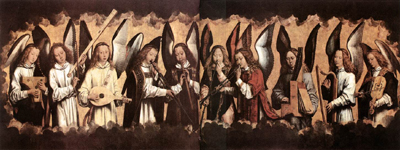On the vielle. . .
A summery of my work with this instrument.
Vielle of my own pattern, based on pictorial evidence. 320mm mensur
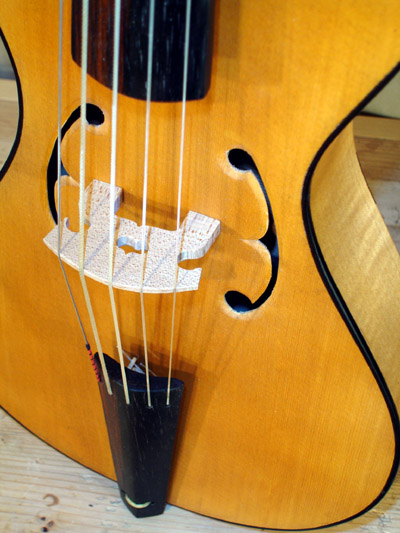
Project journal, commencement Friday, January 12, 2007

A new vielle of my own pattern for John Hillenbrand of Savannah. The instrument is being customized for John from my original design to have a larger peghead to make tuning easier during performance and the overall body depth is increased for added volume. Here the flame maple ribs are bent around the form and the neck/peghead is rough carved. The striped maple and ebony back is attached.

The fingerboard is shaped, first with a spokeshave, then with the block plane. The final shape is obtained with the use of a template.
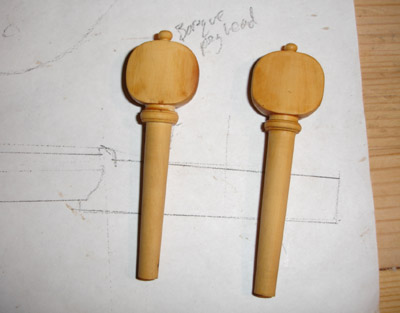
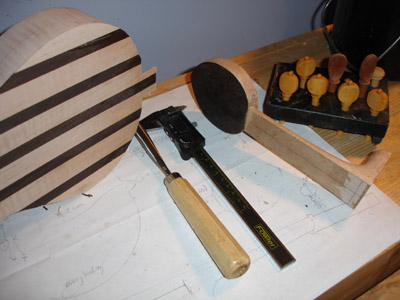
Neck/peg disk with rosewood veneer and boxwood pegs. The fittings of this instrument are unapologetically baroque.

The neck is attached. The fingerboard is finished.

The top is rough cut and rests on the finished body. The soundholes are located. The fingerboard is not attached.

The soundholes are cut.
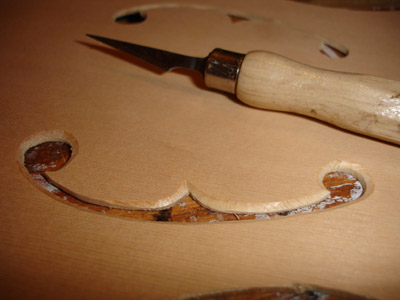
The soundhole is beveled.


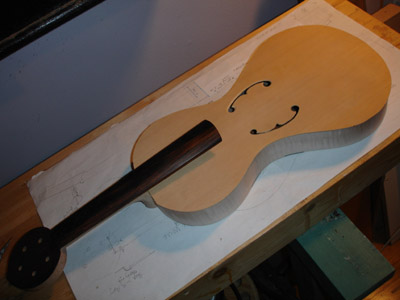
The unattached top again rests on the body, with one soundhole complete.
.jpg)
The bass bar is attached and is being shaped. Spars have been added at the weakest portion of the soundholes to prevent cracking.
The bass bar is shaped and the cross spars are attached in the manner of a flat-top guitar. Because the vielle top is flat, bass bar and soundpost alone are not enough to keep the soundboard from collapsing.
The spars are shaped and the top is ready to be attached to the body.
The underside of the tailpiece is being shaped

Detail of the finished tailpiece. It is made from a continuous piece of rosewood from the fingerboard, showing off a subtle streak of sapwood.
The top is attached and trimmed. The next step is the routing of the ebony edgeband around the top.
++++++
The binding strips are cut. The soundboard binding is quite wide for aesthetic reasons, and to bend the ebony I am having to make each side as two laminations.

The purfling is attached and is being planed down flush to the table. The dovetail at the neck will be truncated prior to the attachment of the fingerboard.

The finish is applied. The fingerboard is affixed. Apiece of ebony awaits being turned into a nut. This is a three part finish: NGR aniline dye stain, hand rubbed lacquer and finally (not yet applied) a thin coating of wax to fully seal the wood and protect against wear of use. I have finished instruments of this period a variety of ways, including no finish at all, which I believe is the consensus of makers to be the most likely historical treatment. This finish is more durable than a traditional voilin varnish and replicates the color and hand of an early viol finish.
++++++
++++++
Finished photos:

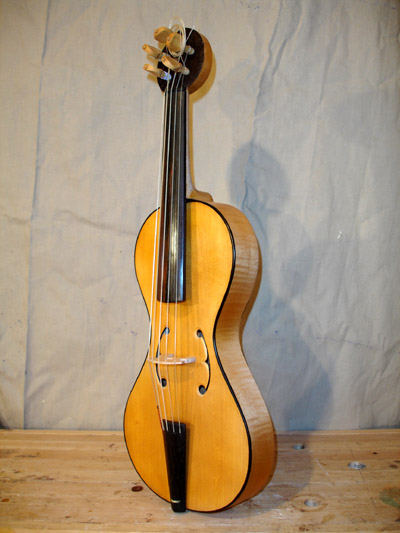
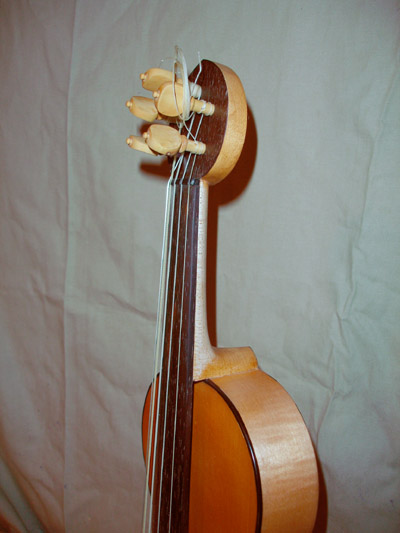
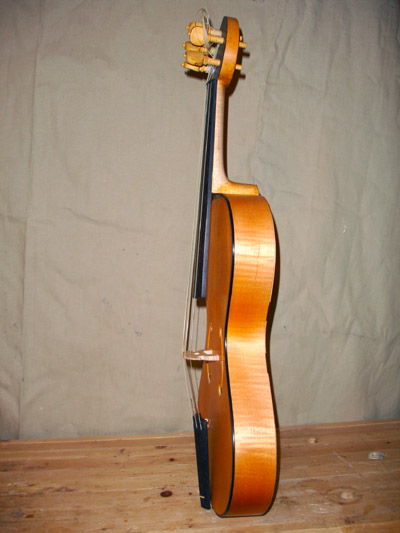
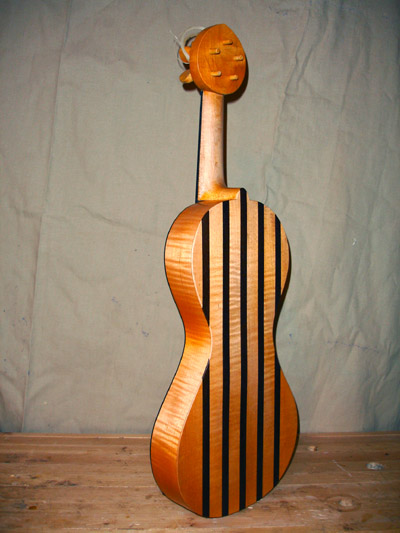

++++++
Vielle after Memling, 360mm mensur
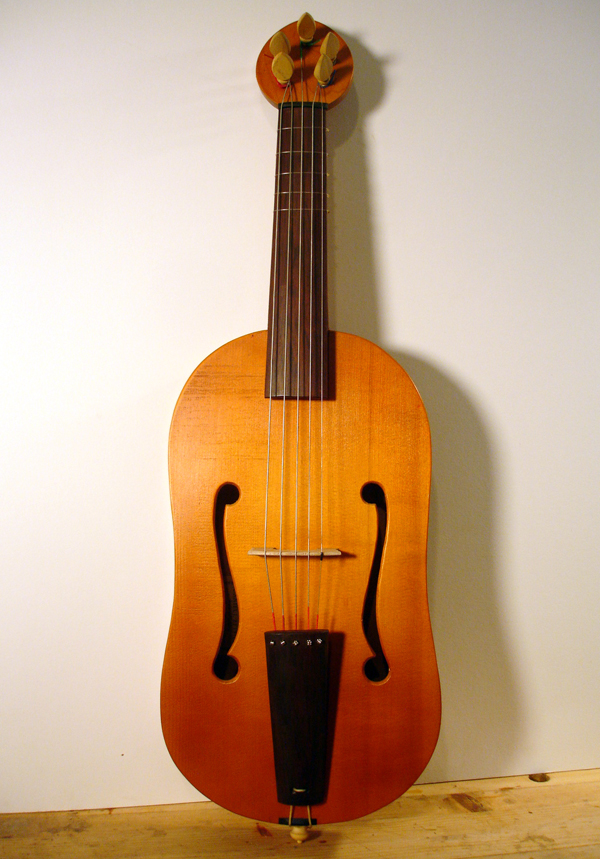
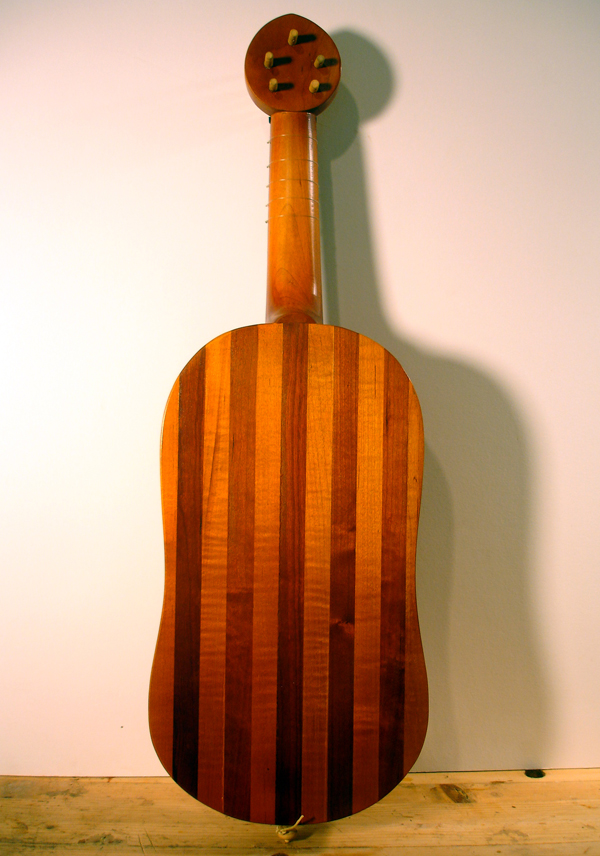
Showing rosewood fingerboard and tailpiece and boxwood fittings. Maple and cherry back stripes. This particular instrument was strung with modern viola strings and nylon tied-on frets.
